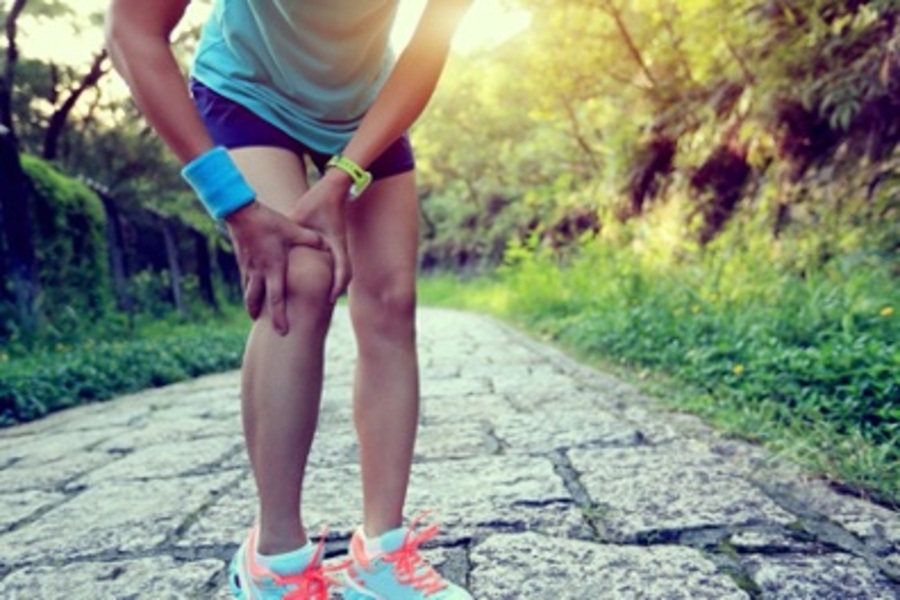Knee pain during exercise: Is it holding you back?
20 February 2023

Although Osteopaths are well known for treating back pain, our highly trained Osteopaths regularly see patients of all ages complaining of a wide range of conditions including a variety of joint pains (e.g., neck, shoulder, hip, knee and ankle), pelvic problems, recurring headaches, neuromuscular conditions, digestive conditions, discomfort associated with pregnancy, sleep problems and common sporting injuries.
One of the more common types of joint pain we see this time of year is knee pain experienced during exercise - perhaps this is because we are all trying to keep up with our new year fitness program or ramping up the training for the weekly park run, half or full marathon season?
One reason for the knee pain could be a condition known as “Runner’s Knee” (or Patellofemoral Pain Syndrome, PFPS) a very common condition, that has been specifically identified as the most common injury sustained by runners. (1)
Patients with PFPS will describe a gradual, dull pain above, below, underneath, or surrounding the knee cap (patella), especially noticeable with activities such as running and squatting (2). This pain may occur with or without a history of a trauma and sometimes, patients may describe that the knee feels like it is giving way or report a feeling of general joint instability.
Females are more likely to experience PFPS. However, a large number of active adolescents and adults of all ages may develop PFPS, particularly those who participate in jumping and sports that repeatedly bend the knee. Due to the symptoms of PFPS, 74% of these patients typically have to limit or even stop their physical activity.
What can I do?
It is important to seek advice from an expert who can confirm the diagnosis and treat PFPS appropriately and as early as possible to limit further damage and the interruption of your daily and sporting activities.
Before treatment, it is very important to do a thorough careful exam of the knee, hip, foot, and ankle, assess range of motion, perform selected orthopaedic test to confirm the diagnosis and the cause of your symptoms.
Most commonly in PFPS there is an element of misalignment or hyper-mobility of the kneecap (patellar) as it glides in a groove (trochlea) at the bottom end of the upper leg bone (femur) causing the patella to glide in slightly different directions, or more to one side of the femur, ultimately resulting in pain or discomfort. This movement may be due to repeated trauma, which increases forces within the joint or adds to abnormal muscle imbalance, or muscle imbalance around, above and below the knee joint.
In addition to patellar malalignment, other biomechanical factors have been proposed as possible causes of runner’s knee as well. These include leg muscle weakness, especially of the quadriceps, hip abductors and external rotators, delayed activation of the key quadricep muscle (vastus medialis), inflexibility of joints in the leg, pelvis instability, low back stiffness and foot over-pronation. (3, 4)
How can we help you?
At Brixworth Osteopathic Clinic, as highly trained primary care musculoskeletal practitioners, we use refined diagnostic skills and experience to treat the cause not just the symptoms of a patient’s condition. We spend the time needed to understand you, the individual, to develop a tailored well-rounded treatment and rehabilitation programme, giving education and exercises as part of the treatment process.
Osteopathic treatment will include hands on treatment utilising joint mobilisation, muscle energy, myofascial release, counter strain and patellofemoral taping techniques. Added to this we will suggest physical rehabilitation with a personalised strength and stretching programme for you to follow.
In summary, if your knee pain is holding you back, then Brixworth Osteopathic Clinic is available for you to gain the expert support you need to get you back to where you want to be.
Don’t suffer in silence! The sooner you are seen, the sooner you will be back on track!
We offer free 15-minute telephone consultations for you speak to one of our Osteopaths, or you can book your first consultation online at www.brixworthosteopathy.com or email info@brixworthosteopathy.com
**In addition, we are offering selected local running clubs discounted first consultations leading up to their spring marathon or half marathon events! Just quote “PFPS”

- Taunton JE, Ryan MB, Clement DB, McKenzie DC, Lloyd-Smith DR, Zumbo BD. A Retrospective Case-Controlled Analysis of 2002 Running Injuries. Br J Sports Med. 2002;36(2):95-101
- Halabchi F, Abolhasani M, Mirshahi M, Alizadeh Z. Patellofemoral pain in athletes: clinical perspectives. Open Access J Sports Med. 2017;8:189-203..
- Pappas E, Wong-Tom WM: Prospective Predictors of Patello-Femoral Pain Syndrome: A Systematic Review with Meta-Analysis. Sports Health. 2012;4:115-120.
- Witvrouw E, Lysens R, Bellemans J, et al. Intrinsic Risk Factors for the Development of Anterior Knee Pain in an Athletic Population. A Two-Year Prospective Study. Am J Sports Med. 2000;28:480-489.
